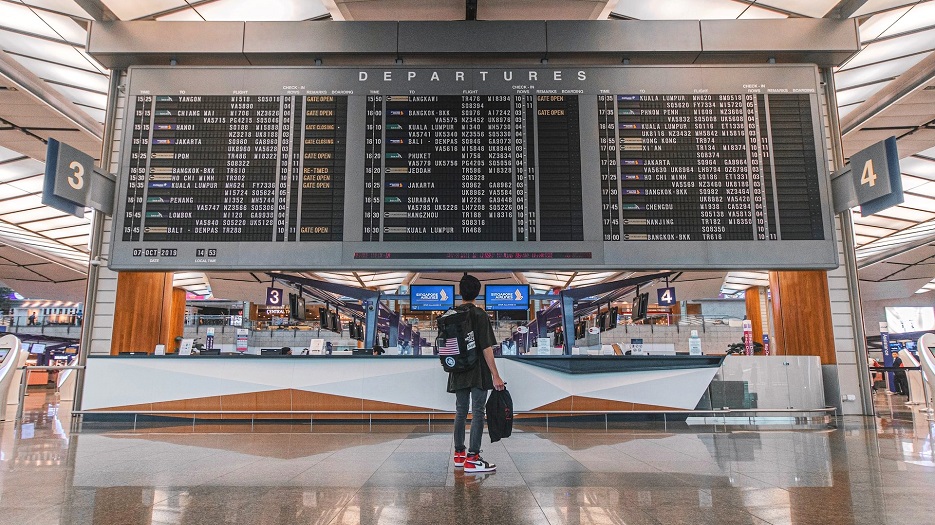International Travel & Tourism Trends in 2021 After COVID-19

The pandemic has hit many industries hard, and among the biggest to have been affected is the travel and tourism industry.
Since the beginning of 2020, we’ve seen a huge decline in passenger travel; deserted hotels and tourist spots went viral; and some of the world’s biggest events were cancelled. But as with every adversity, the industry looks set to turn things around.
As of August 2020, more countries have reported a success in flattening the curve, and more are on the way to reopening their borders, while pockets of the world are slowly resuming holiday activities, starting domestically.
With the further easing of border restrictions and lockdowns, travel and tourism leaders and business owners are creating new opportunities through change and are pushing new boundaries and strategies to bring the industry back to life.
As we anticipate more good news from this front, let’s take a look at 6 travel and tourism trends to expect in a post COVID era, and signs of recovery in the industry.
What are the emerging travel trends post-coronavirus?
The trying times has a double meaning in this unprecedented phase. Business may be struggling, but it has also open up avenues for them to attempt new things and keep their service and offering interesting for consumers.
Restaurants step up with their takeout menu, hotels throwing staycation packages and culinary deals, and airlines resorting to creative “flights to nowhere” like Taiwan’s EVA Air, to name a few.
1. Staycations and local travels
Perhaps one of the most significant changes in the local travel scene is the rise in popularity of staycations.
In Hong Kong, luxury hotels were fully booked for their staycation offers, largely due to the special packages at an affordable price that appeals to the travel-starved population. Travellers get a holiday treat while being assured of the safety from the hotels’ rigorous sanitation processes.
The same phenomenon is also observed at beach and island getaways where private villas are snapped up for more intimate, smaller parties.
2. Next level takeout
The renewed interest in domestic holiday locations such as local beaches, hiking trails, camping grounds, and parks not only attracted more customers to relevant businesses, but it also drew attention to “picnic basket” experiences, where restaurants cater wicker basket filled with goodies to pleasure-seekers at selected destinations.
To stay competitive and relevant, restaurants are coming up with interesting ways to get customers excited about eating from beyond their premises – from Michelin-starred chefs for private hire, picnic takeout, to cocktail orders made fresh upon delivery, and whole high-tea experiences packed up to go.
3. Crowd control
One trend that will likely gain favour is better crowd management. With many once-bustling tourist destinations reduced to minimal activities, people are seeing the positive effect on the environment and this has given authorities something to consider in terms of controlling the crowd in the future. This win-win move will help tourists enjoy a more pleasant visit to popular spots, while also keeping the environment in good shape.
4. Travel bubbles
Countries that have been successful in containing the pandemic have demonstrated how tourism can quickly pick up again. In Baltic States like Estonia, Latvia, and Lithuania, they championed the “Travel Bubble”, which is essentially partnerships that opens their borders and allows their citizens to travel freely within these countries without quarantines upon arrival. This free passage is not exclusively for tourism, but also to ramp up business activities and save their trade sectors.
This quarantine-free travel is also opened between Austria and Germany, Switzerland, Liechtenstein, Slovakia, Czech Republic, and Hungary, and is expected to increase when more countries and their neighbours find consensus with their epidemiological situation.
5. Touch-less travel and automation
Touch-less travel – this is probably the most immediate thing people will prioritise and may also be the most visible change in the travel and tourism industry. Even with the strict health and safety protocols, exchanging travel documents in the airport and hotels still present risk of infection. The same goes for touching surfaces by the check-in counter, security checks, border control, as well as hotel front desks.
This means automation are expected to become a part of the new normal of travel trends in 2021. Biometrics (facial recognition, contactless fingerprint scan, etc.) will replace physical fingerprint and hand scanners.
6. Shift to private mode of transport
In terms of tourism products, vacation rentals are looking to appeal to the masses in equal if not more than hotel bookings due to lesser capacity and greater privacy. The same is expected with car rentals, as tourists are more likely to shy away from public transport like buses and trains.
Given the current situation, travel advisors and travel insurance will also be in demand for obvious reasons.
How does recovery look like in travel industry?
Borders and airports’ re-opening show signs of potential recovery in travel industry.
Nearing the end of 2020, airline companies are starting increase flight frequencies, and while it is still a fraction of their pre-pandemic schedules, passenger activities are starting to pick up a little bit more in the airports.
Currently, the whole world is stepping up in their border entry guidelines to welcome back travel and tourism activities. Baltic countries like Estonia, Latvia, and Lithuania have opened their borders in mid-May to allow their citizens to move freely.
In EU, many countries reopened their international borders with emphasis to their non-discriminatory guidelines. Australia and New Zealand had a similar agreement, while France and the United Kingdom agreed not to quarantine each other’s citizens. By July, travellers from outside EU are allowed in to a certain extent. Some countries, like Ireland, will conduct tests for tourists at the airport.
Singapore have started allowing essential travel for passengers who have tested negative from the virus. Passengers now use contact-tracing apps and can go about freely as long as they do not deviate from their itineraries.
Some countries like Bulgaria, China, Croatia, Denmark, Egypt, Greece, Netherlands, Portugal, Switzerland, and Vietnam also have reopened their doors for tourism. Africa, Europe, and Oceania are leading the way to ease up lockdowns and reopen their countries for business. This leaves North and South Africa to catch up.
While some countries have given the green light for tourist entries from select lower-risk locations, countries with a good track record of the pandemic control, healthcare system, and governance are definitely more likely to be in a traveller’s top consideration of places to visit.
It is worthy to note that with some destinations may have a period of isolation upon entry, travellers are likely to take fewer trips but embark in longer stays.
For a more detailed look into your region, please visit your local travel advisories.
Afterthought
If there is one thing these emerging trends are showing us, it’s that people can turn challenges to chances and evolve to create opportunities that will well survive the pandemic. With the full recovery of the travel and tourism sector on the horizon, the world will look forward to the new ways to travel.





